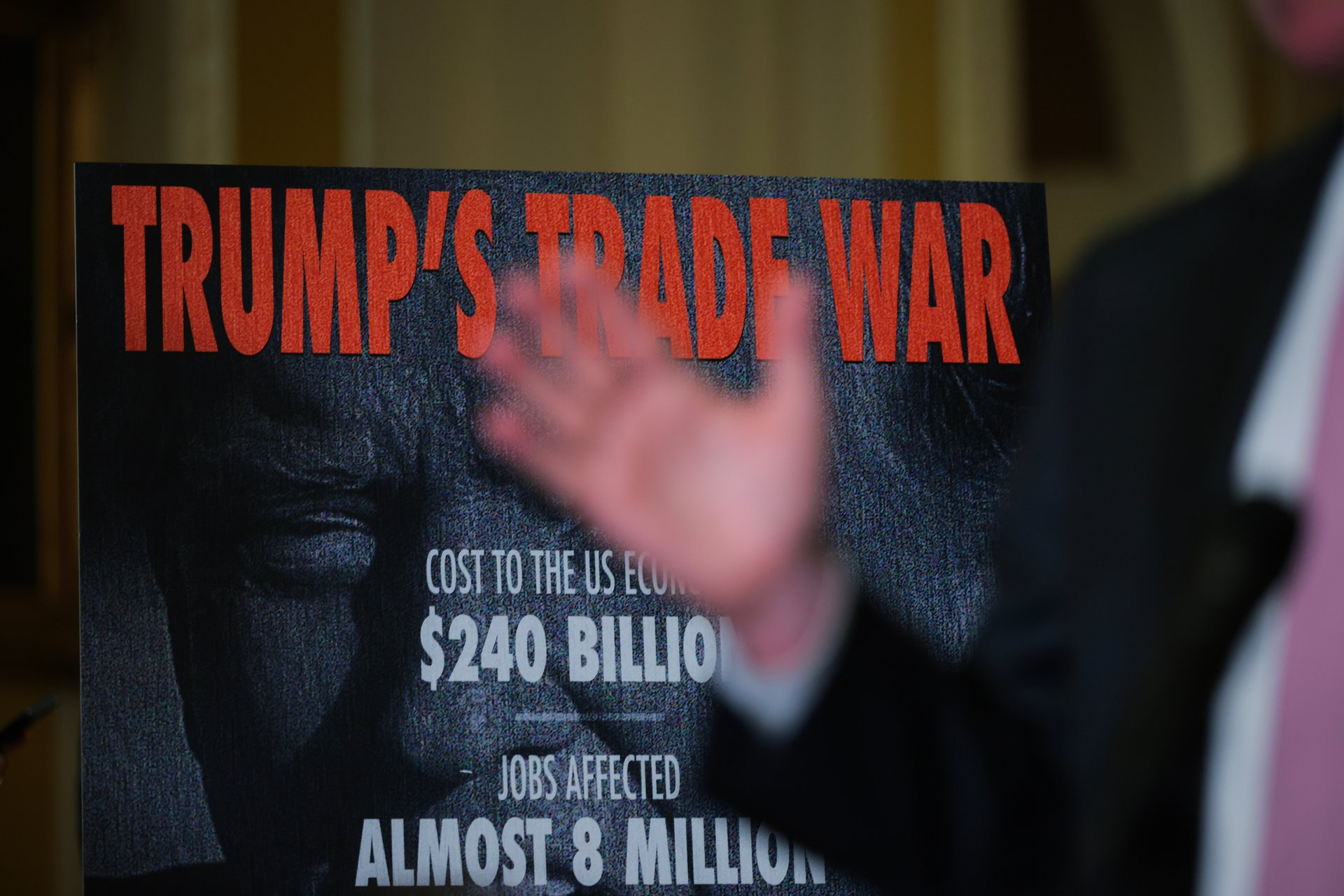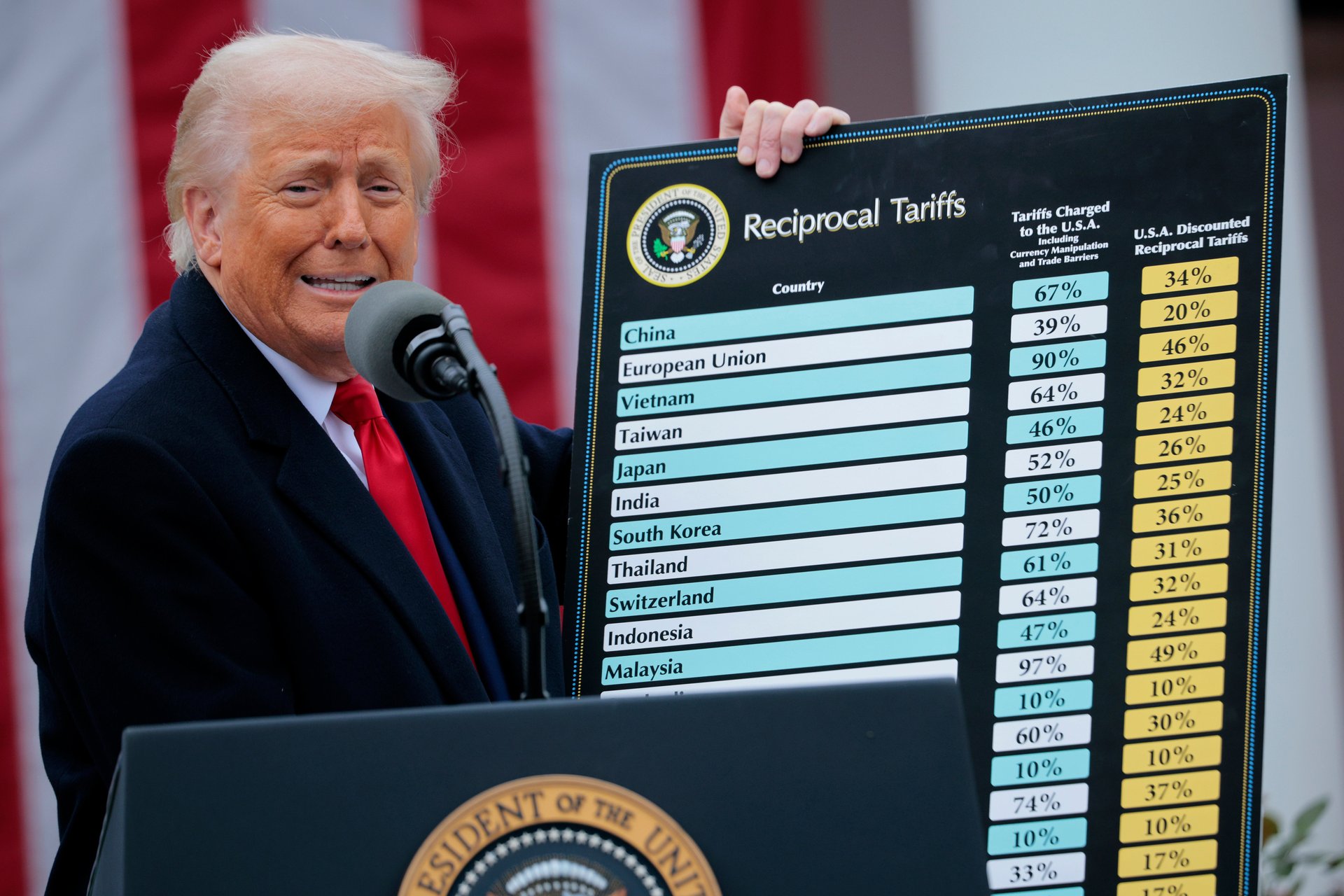Why Trump's new tariffs could trigger a trade war, according to a strategist
Dimitri Zabelin, geopolitical strategist at Pantheon Insights, broke down how China and the EU are responding to the new tariffs in an interview with NYSE TV

Dimitri Zabelin, geopolitical strategist at Pantheon Insights, spoke with NYSE TV for a special video interview.
Watch the interview above and check out the transcript below. The transcript of this conversation has been lightly edited for length and clarity.
KRISTEN SCHOLER (KS): Joining me now with more to understand what this means is Dimitri Zabelin, a geopolitical strategist at Pantheon Insights. Dimitri, it’s great to have you on the show this morning. For our viewers watching this, how will these tariffs affect them?
DIMITRI ZABELIN (DZ): In terms of the tariffs, I think what we’re going to see in terms of the effects, one certain effect we’re going to see is weakness in manufacturing. I think you’re going to see anemic growth over the next couple of months, and I think you’re going to see the white collar job market slip into an even deeper recession. I’d say that’s really been going on since 2023, except now you’re going to have compounded weakness as a function of weaker manufacturing growth that’s going to affect blue collar jobs. You also have to look at the investment cycle to the extent that businesses are going to find it very difficult to invest substantial amounts of capital if they’re subject to this kind of policy volatility. All of Trump’s tariffs have been done by executive order. Some of these, of course, remain insulated, and some have been rejected by Congress, for instance. I think the ones against Canada have been, but also some existing provisions in the USMCA essentially insulate Canada and Mexico from some of these tariffs.

KS: This Saturday, a 10% baseline tariff for U.S. trading partners goes into effect, and there’s yet another tariff deadline on April 9 next week when additional reciprocal tariffs go into effect. Earlier this morning, we saw China impose a 34% levy against the U.S. in a retaliatory move of its own. Do you anticipate, Dimitri, that we’ll see other countries do this? And what does this mean for potential escalation?
DZ: I mean, we’ve already seen how the European Union has actually developed several policy provisions in anticipation of what they deemed economic coercion. It still sort of works within this gray area within the WTO, but even if countries try to go through third-party institutions like that, the sort of policy modus operandi these days in the modern global political economy is unilateralism more so than anything else. I mean, I think it’s very interesting that we’re seeing tariffs in Asia and Southeast Asia actually be much higher than in South America, and I think you can understand that through a geopolitical lens — China is South America’s largest external foreign trading partner, and we’ve heard Trump talk about the Panama Canal and his security concerns there. To that extent, I think you’re going to see a lot more basis for economic cooperation between the U.S. and South America. Certainly, Latin American equities are certainly looking more attractive under that consideration. And if you look at Europe, for instance, instead of pushing back, you may see them exercise a kind of policy, judo, which is to lean in because they may then lower their own tariffs, which would then force Washington to lower its tariffs, as well. I think you can see it from that angle, but you’re also seeing that this is transactional. And what’s interesting is that in the initial part of Trump’s term, initially with India, for instance, the tariffs on Harley-Davidsons coming into India are about 50 or 40%. If memory serves, India wasn’t going to lower it to zero; instead, they wanted to strike a compromise, which is, OK, we’ll lower it to 30%. I think the base figure was 25, and in exchange to make up for that difference in tariffs that we still have up, we will purchase more energy and oil from the U.S. And that, we saw, was a convergent policy to the extent that the Trump administration was talking about energy dominance and exporting more energy all around the world. So we saw a convergence of trade and energy policies. That’s something investors can work around. To the extent that it is a very narrow set of parameters that countries can work around to develop these concessions with the current sweeping tariffs, it’s a lot more difficult in that way.
KS: It’s interesting, Dmitri, because we talk about the consumer impact, we talk about the geopolitical impact. Obviously, a key impact that we need to address here, broadcasting from the stock exchange, is the impact on corporate America and earnings season, which will start next week. Oftentimes, it’s the guidance, the forward outlook that will move a stock more so than the backward-looking results, if you will. How does corporate America plan for this?
DZ: Well, that’s the thing. In many ways, I don’t think you can because it’s due to so much policy volatility and it’s done by executive order. Over half of S&P 500 companies recently did a survey. Tariffs were their top concern, and understandably so. In the first Trump term, we saw how he imposed tariffs against China. In that regard, companies were able, I mean, obviously there weren’t an optimal set of circumstances, but because at least they had some certainty around them, they could plan around them. If you have a prolonged period of uncertainty because businesses don’t know what the policy input is going to look like, that’ll make it very difficult to plan around. So I’m expecting much more anemic growth in manufacturing. I think Caterpillar (CAT), for instance, is looking to probably reduce their workforce in the future if they haven’t already, as well as many other industrial-based companies that are likely looking to reduce their labor force as manufacturing weakens in the U.S.